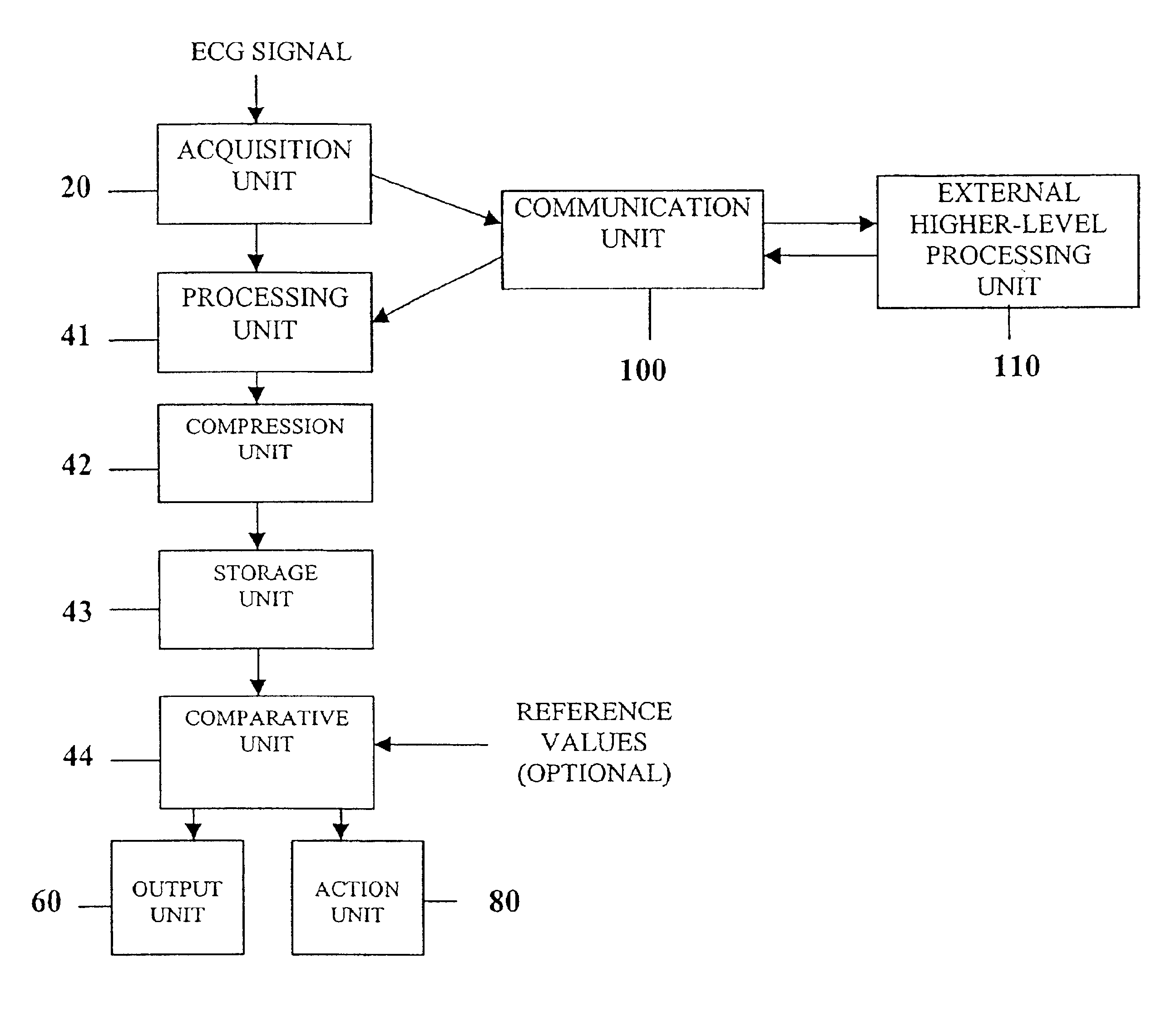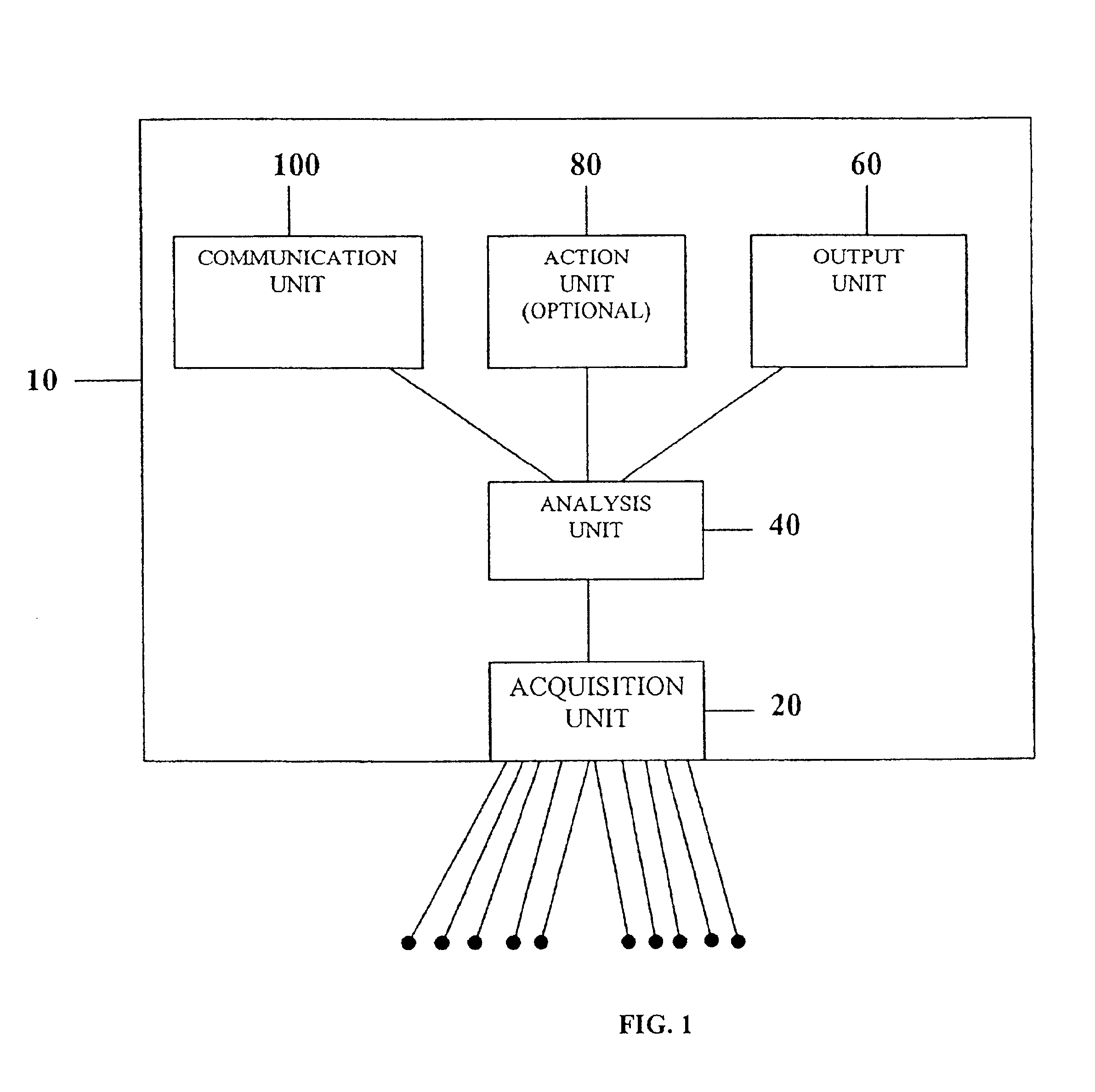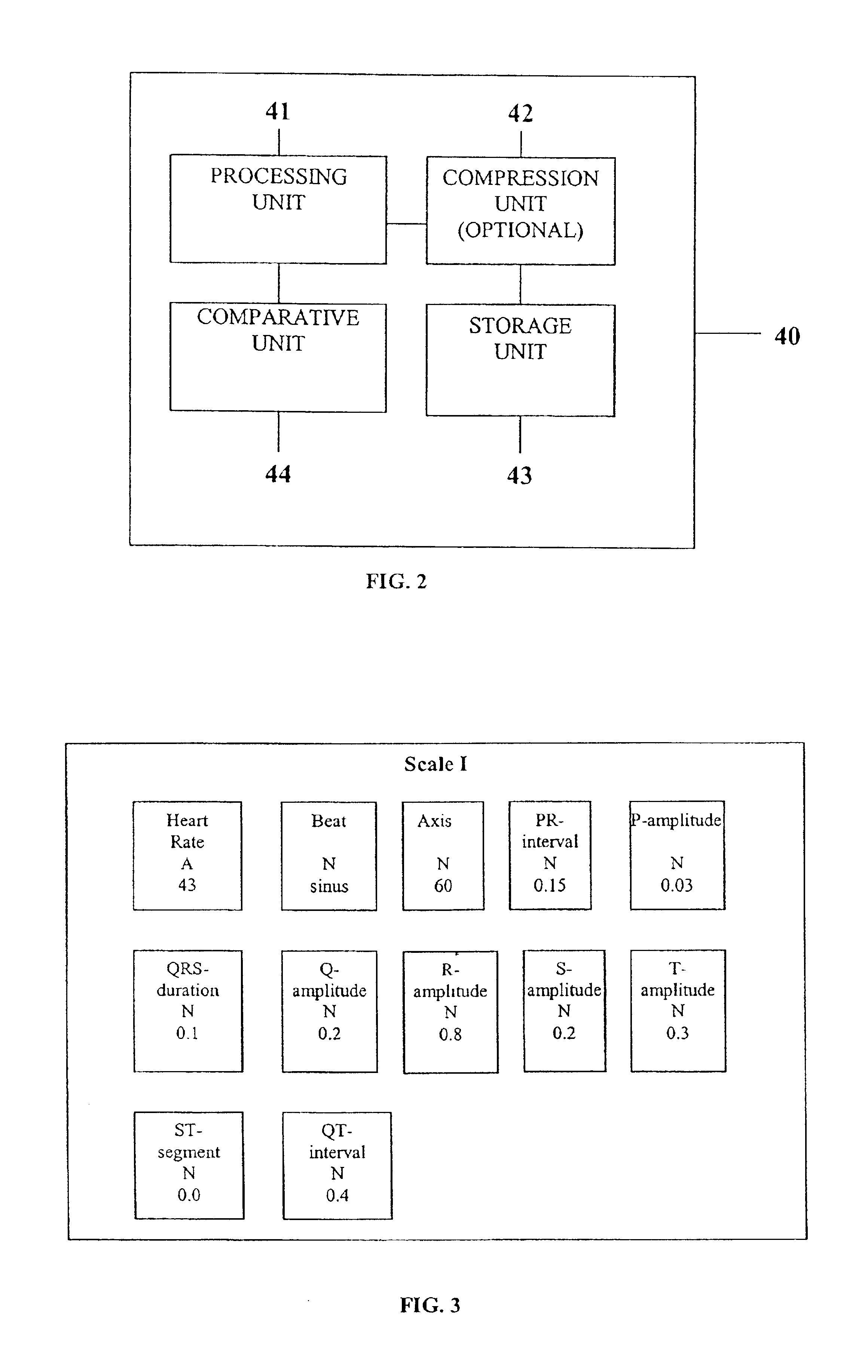System and device for multi-scale analysis and representation of physiological data
a multi-scale analysis and physiological data technology, applied in the field of physiological data analysis methods and equipment, can solve problems such as unstable accuracy, and achieve the effect of facilitating individual data analysis
- Summary
- Abstract
- Description
- Claims
- Application Information
AI Technical Summary
Benefits of technology
Problems solved by technology
Method used
Image
Examples
example
[0070]The following example illustrates the sequence of ECG analysis at the system's Scales I, II and III. Serial ECG recordings from a patient A who had a structural heart disease and dynamic changes in the electrocardiogram were processed at each Scale with a different degree of detail. Scale I revealed the changes in a small number of important, primary elements using minimum computational resources. Scale II exposed changes in the primary elements that occurred in serial recordings over time. Scale III provided complete description of the serial ECG changes using a complete set of primary elements and their combinations.
[0071]System initialization. When the system is used for the first time, initialization is required for verification and individual adjustment of the analysis criteria including identification of the primary elements and their search criteria. System initialization is performed using the hardware and software resources of the intermediate resolution Scale II and ...
PUM
 Login to View More
Login to View More Abstract
Description
Claims
Application Information
 Login to View More
Login to View More - R&D
- Intellectual Property
- Life Sciences
- Materials
- Tech Scout
- Unparalleled Data Quality
- Higher Quality Content
- 60% Fewer Hallucinations
Browse by: Latest US Patents, China's latest patents, Technical Efficacy Thesaurus, Application Domain, Technology Topic, Popular Technical Reports.
© 2025 PatSnap. All rights reserved.Legal|Privacy policy|Modern Slavery Act Transparency Statement|Sitemap|About US| Contact US: help@patsnap.com



